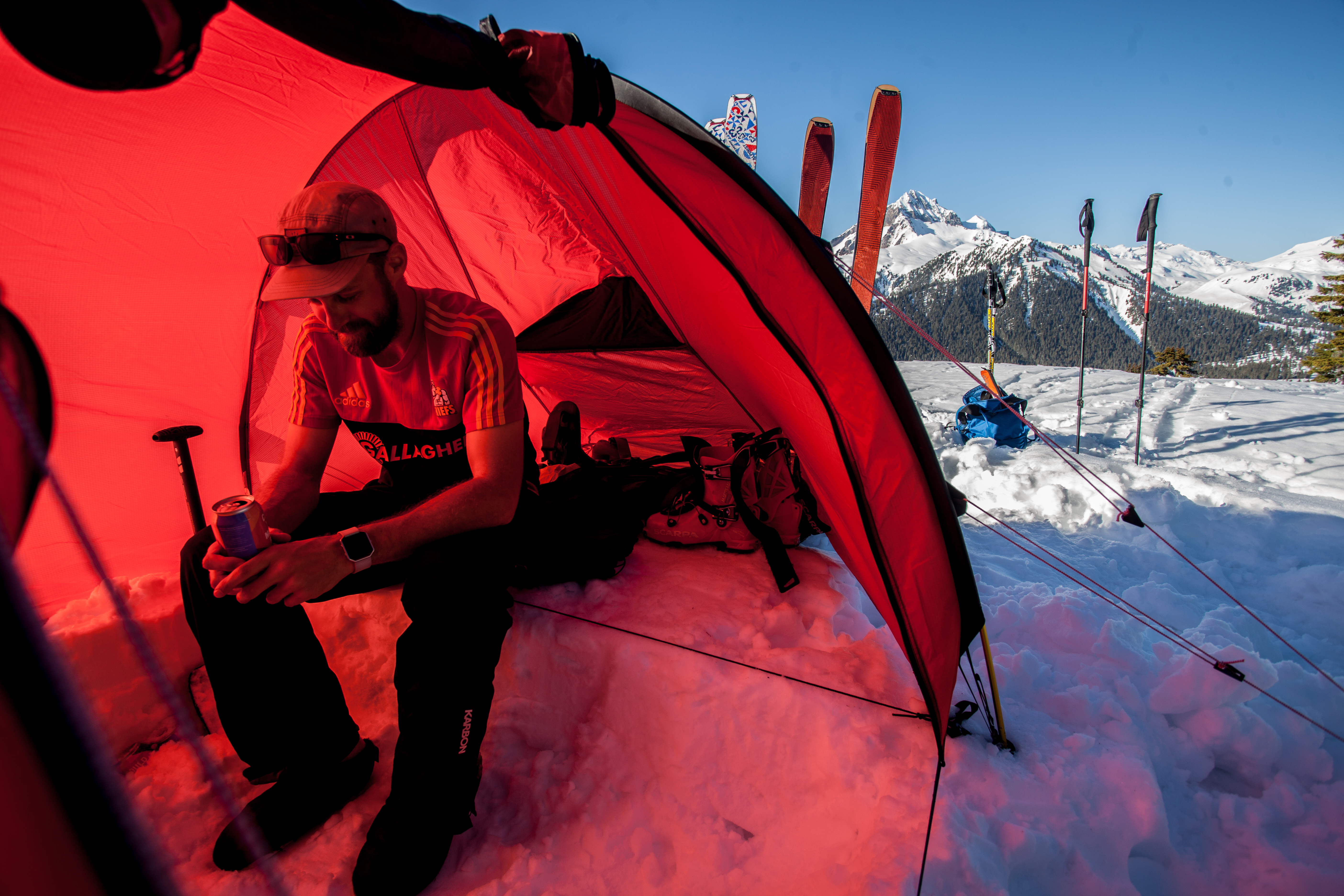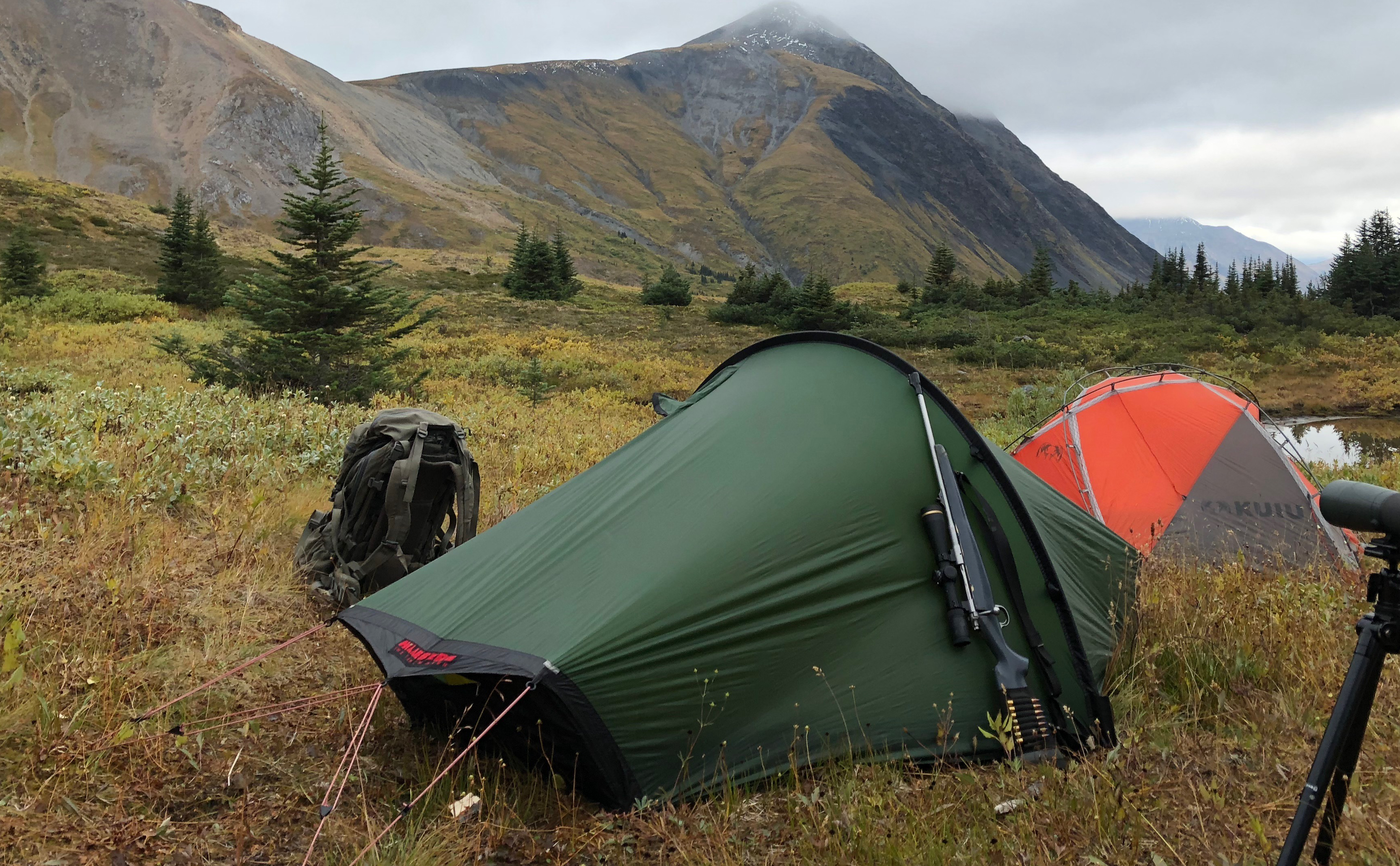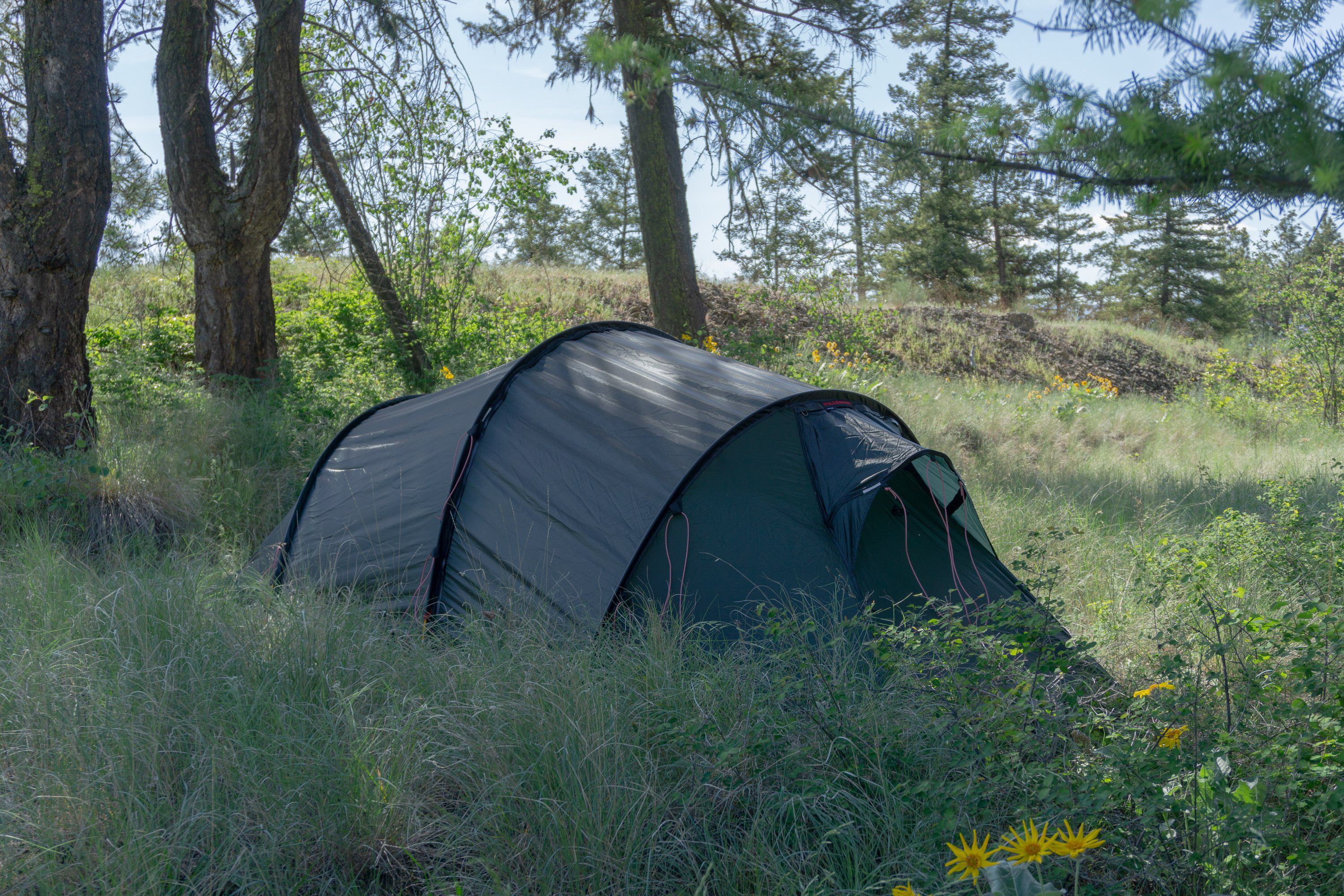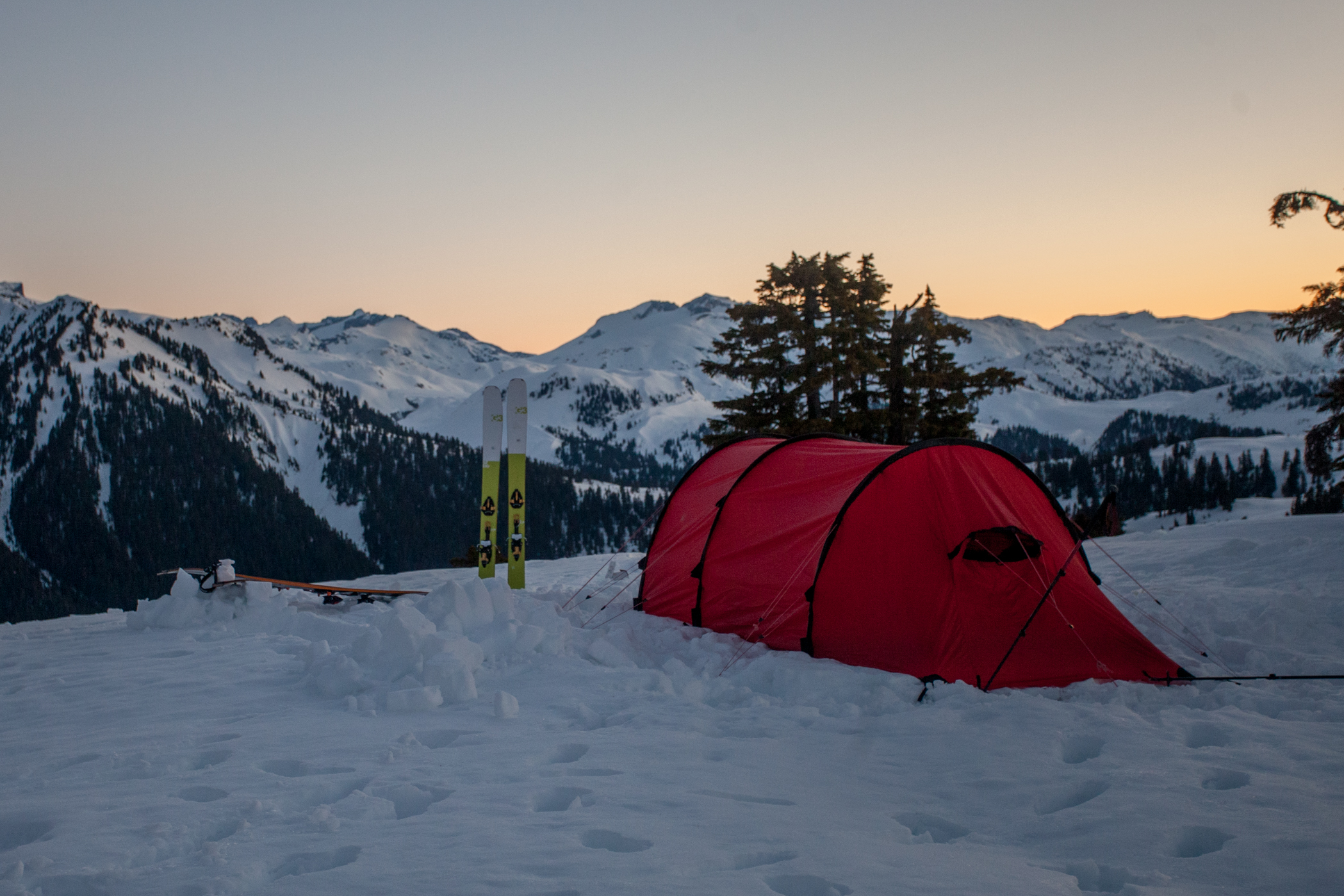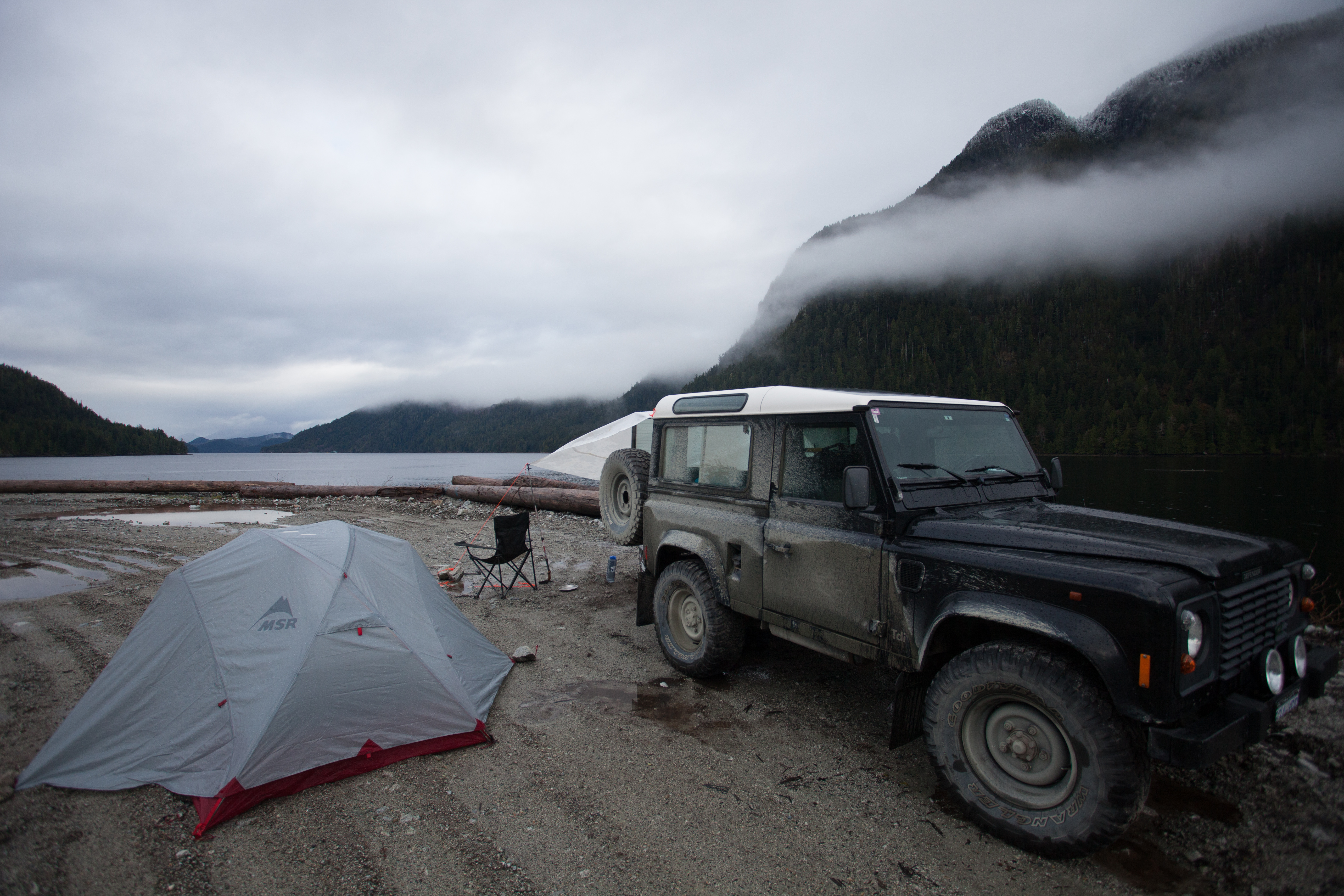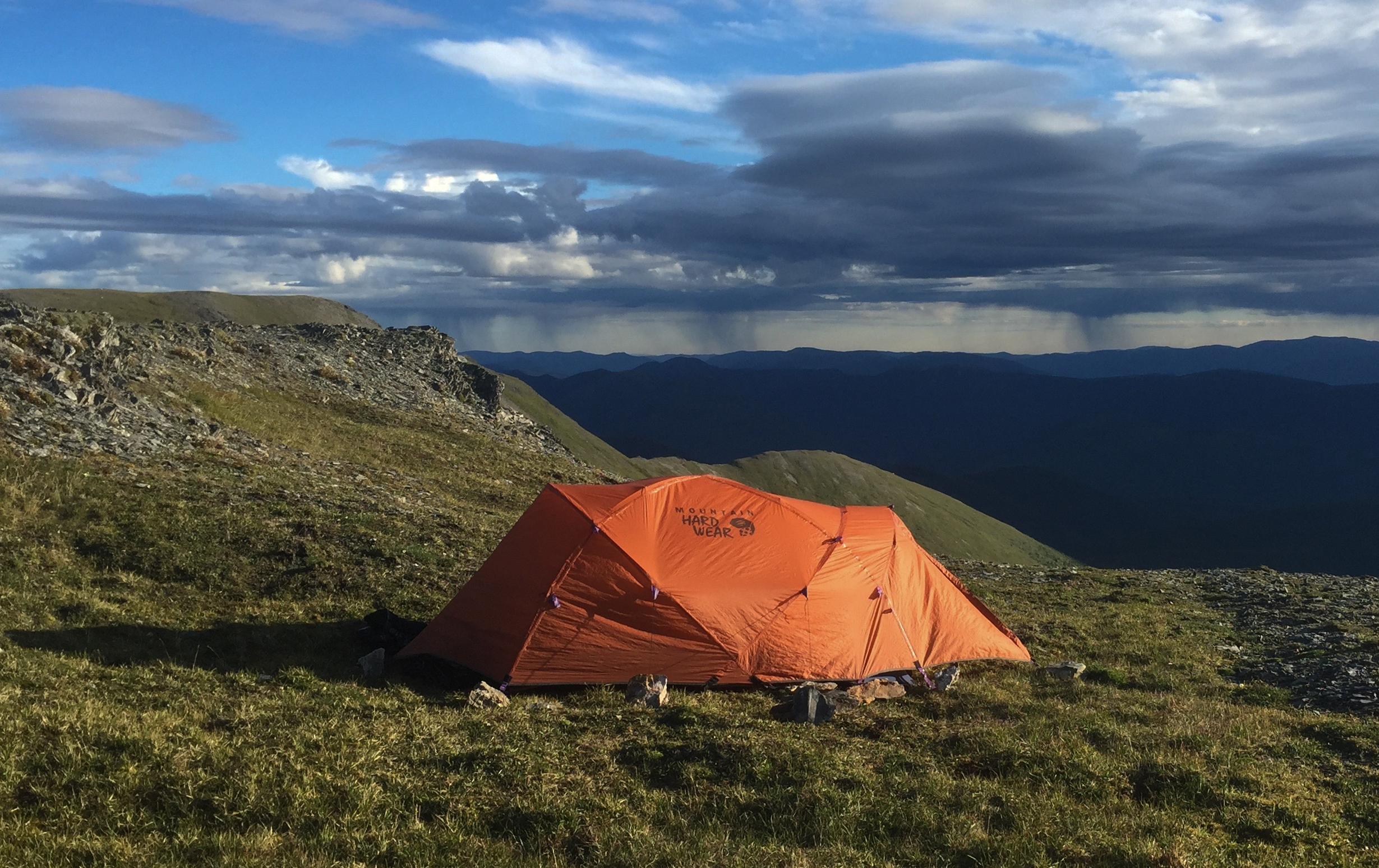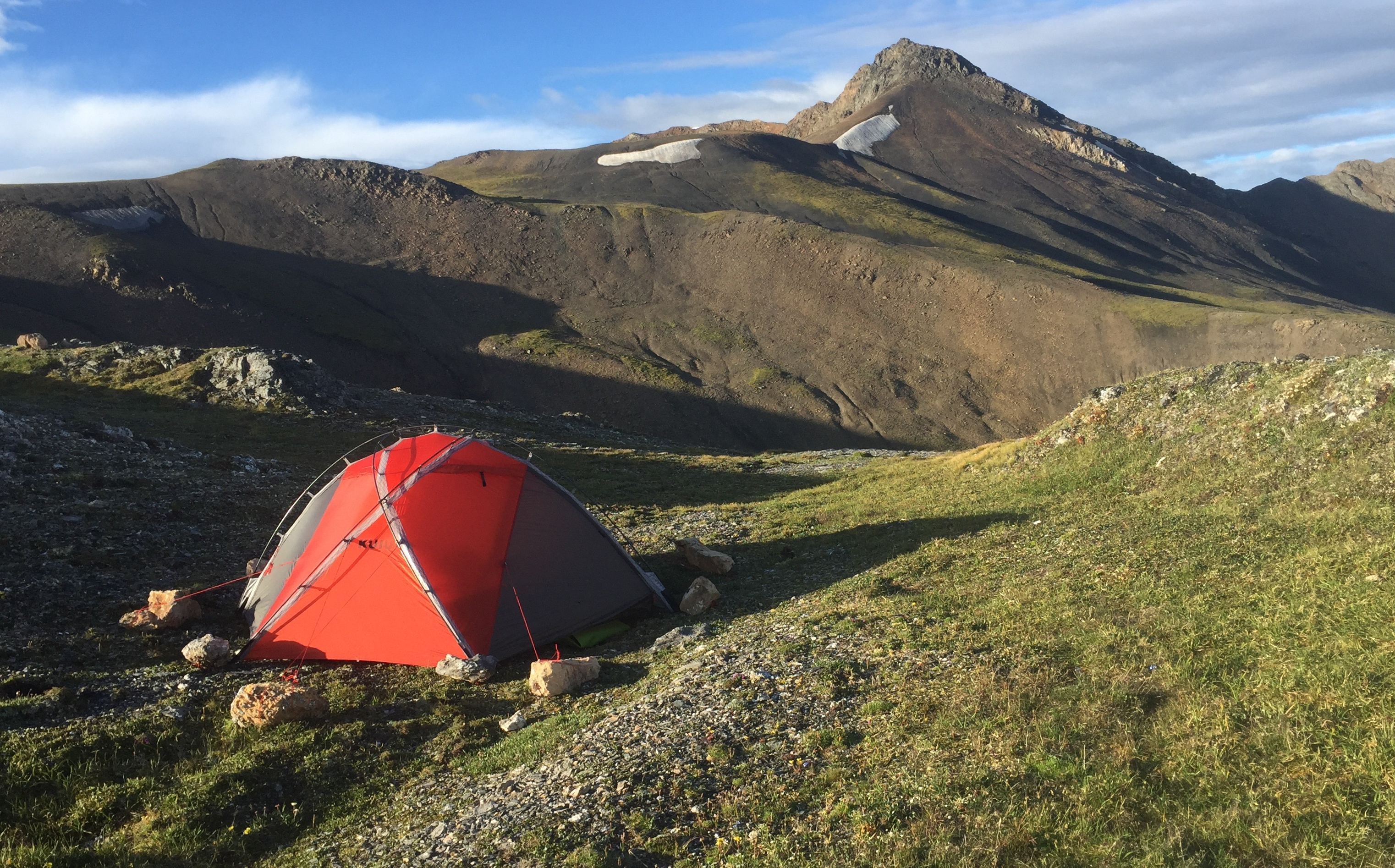Of the countless hours of research and dollars spent on hunting gear annually, tents are often one of the most overlooked items in a hunters kit. Often hunters either use what they already had for camping in the past, underestimating the importance of a quality tent or simply lacking the budget to spend on a proper mountain tent, opting for a less expensive tent.
The majority of tents found in stores fall under the general “camping” category, suitable for fairly stable dry weather, moderate temperatures, and light winds. These are the sort that can be found at your local Walmart for $59, useful for a long weekend of car camping under ideal conditions — but little else.
The next step up from there and one that is more suited for our purposes is the backpacking category. The tents in this category typically start around $150 go well over $1000 in some cases. They often feature more than one entrance, waterproof material, a vestibule, and are designed to be packed up in a somewhat compact fashion to be packed around while backpacking. Seems simple enough right? You are backpack hunting, these are backpacking tents. What could go wrong?
This is where things become a little more complex, particularly when you take into account the unique and varied regional climates & weather patterns they are to be used in. I have neither hunted nor camped in Arizona, but I can tell you that my needs for a tent on a December non-permit archery hunt for deer would be drastically different, and less critical, than my needs on an October Stone Sheep hunt in Northern British Columbia. Different climates and hunts often call for different tents, however for most of us, it is neither practical nor feasible to have an arsenal of 2-4 shelters for any situation we may encounter. Instead, the common approach is to find a tent that is the right blend of weight, performance, and price. One that covers the bulk of our needs without becoming overly specialized, sometimes leaving a little to be desired when you push the boundaries of weather and camp location.
Before I dive into my thoughts on individual tents for the backcountry, I think it is important to touch on a couple of things that I have realized in my time spent inside them. These are all tents that I have spent a reasonable amount of time in, while hunting and camping in the mountains. There are other tents on the market that are likely great options as well, some of which I have looked over in person. However, I can only speak to ones that I have tested, in conditions that I would consider demanding of the performance claims these tents make. With that said, there are a few commonly held misconceptions that I feel need to be set straight to give the potential purchaser the best bang for their buck.
Lighter = Better.
There’s a trend amongst mountain hunters to shave weight in any possible way. Cutting your toothbrush in half, quilts instead of full sleeping bags, $80 titanium coffee mugs — don’t get me started — you name it and we have tried it. Anyone who has put an honest 100lbs on their back knows how much it sucks, and anyone who does it often will usually chase the ultra-light side of all gear possible. Ultra-light tents, unfortunately, are rarely ultra durable. In my experience, they are also not ultra-waterproof, or windproof, or snowproof. Ultralight tents usually have a premium price tag accompanying the carbon fibre, Dyneema, or super thin sil-nylon materials they are constructed with — often giving adding perceived value to the product. I’ve experienced the cheesecloth like wonders of a featherweight rain-fly before, from a reputable brand, and I won’t be fooled again. The short of it is this: Lighter is not always better, and it is almost never more durable.
Hunting Branded Tents
Let’s clear the air here. As with your favourite knife, binoculars, or sunglasses, camo on a tent is completely unnecessary, useless, and more likely to aid you in losing track of it than anything. Tents, unless made by a reputable tent manufacturer, that claim to be designed for hunting are usually just an upsold rebrand of an existing model. Don’t buy into the hype, and you won’t lose your tent in the fog when you are stumbling back to camp at 1 AM with a whole buck strapped to your back.
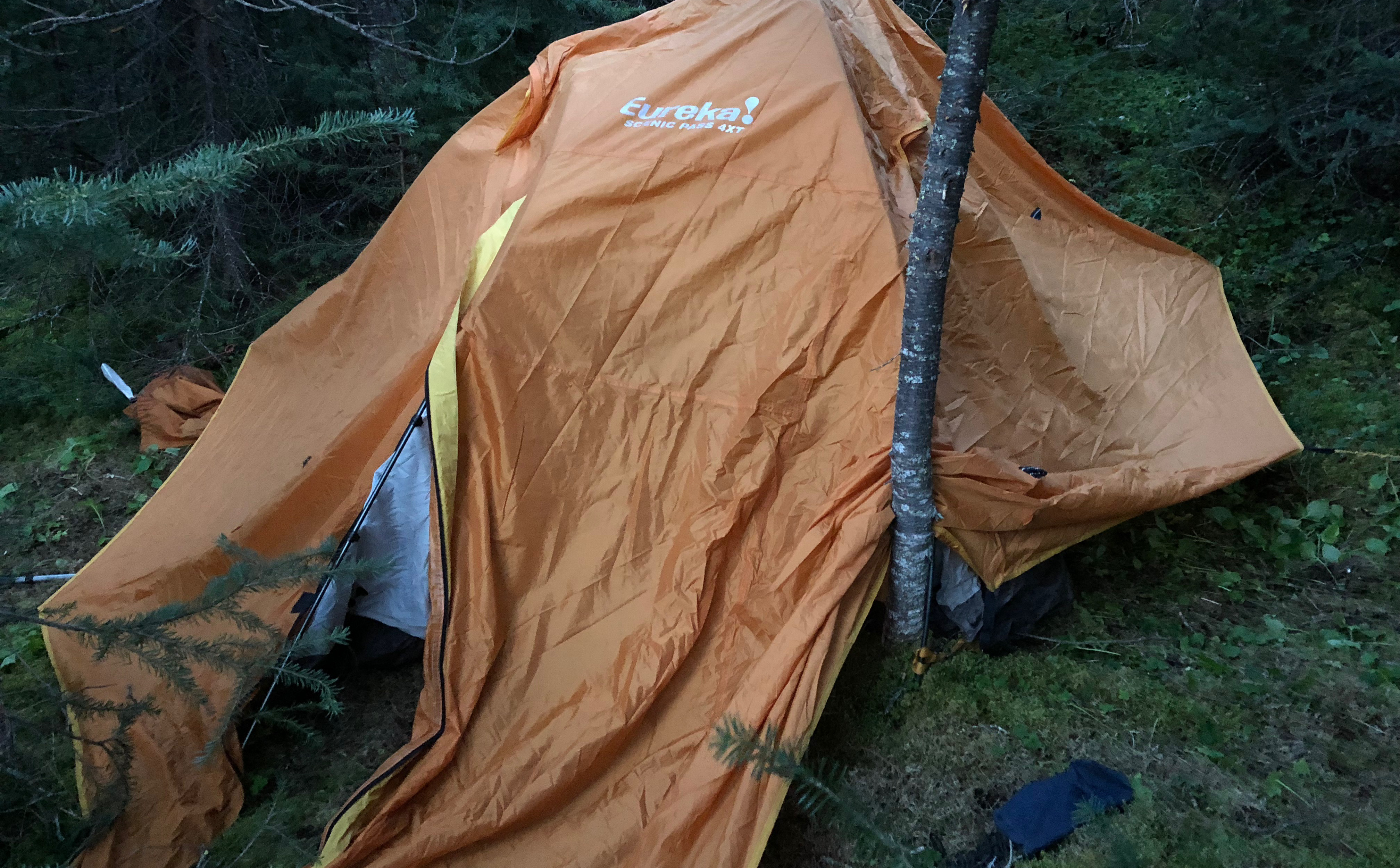
Some tents aren’t built for the backcountry.
Do-it-all & Gimmicks
Built-in lighting systems, 3-in-one bag-mattress-tents, hammock tents, and any other gimmick in a tent is likely just that — gimmicky. Odds are you are paying a premium for bells and whistles that are mostly useless or catching a “too good to be true” deal on something that is mediocre at best. Keep it simple and find functional, quality tents that fit your budget.
Hilleberg
There are a lot of good tents on the market these days, but there is still one company that steps out ahead of the competition — Hilleberg. For those of you that may suspect a bias towards Hilleberg — they are sponsors of the Beyond The Kill podcast — know that the two models that I own were purchased without any special deals, guide discounts, or promotions attached. I simply wanted the best tents available, and all research pointed towards Hilleberg. My only bias towards them is that they are the best tents I have used.
It shouldn’t come as a surprise, given their standing as the best of the bunch, that Hilleberg’s tents are unique in a few different ways. First is their labeling system. They have scrapped the two, three, and four-season monikers for a simple colorized approach. Part of that reason is to dissuade the idea that four-season tents are only for winter use. From my experience, even their lightest-duty tents outclass many other heavy-duty tents. Their rating system falls under Blue, Yellow, Red, and Black Label tents. Specific tent models across each line may share a similar design, differing primarily in weight and strength.
Blue Label – Specialized tents, each designed and built for a specific purpose. These tents are group shelters, some with modular design, intended as a long term “base camp” style shelter for extreme conditions.
Yellow Label – the lightest weight tents, engineered for warmer climates and for the snow-free months of the year. Ideal for warmer weather trips where the lightest weight is the highest priority.
Red Label – All-season tents that prioritize lightweight over absolute strength, adaptability, and overall comfort. Ideal for all-season trips where weight is a priority and where the conditions may be all but the most challenging. Red Label offers the greatest value when balancing strength and light-weight for mountain hunters in most conditions.
Black Label – The strongest, most adaptable, most comfortable all-season tents. Ideal for any trip, anywhere, in any weather condition, and in any season. These tents are as bombproof as you will find
Hilleberg Akto – 1P
For my needs, this is the ultimate single person tent. Lightweight enough that it is hardly noticed in the pack, the Akto has seen more use for me than any other tent I have owned. This is their lightest all-season solo tent, coming in at 3lbs 12oz packed weight, including pegs, pole & pole repair sleeve/kit.
The Akto has a simple set up, with a single arch pole, 4 corner peg points, and six total guylines. In situations with low wind, the tent can be set up using the four corner pegs and two guylines on either end of the tent. The Akto shines in the mountains, with a compact footprint it makes finding a suitable tent location easy — a real blessing when you are camped 3000 feet above the valley floor on a snow-covered mountainside. This is one of the larger solo tents on the market, so it doesn’t feel as cramped as similar offerings that you see from other tent manufacturers. As with all Hillebergs, the inner tent is already attached to the inside of the rainfly (though removable) and the poles run through sleeves on the exterior. You need not worry about setting up in the rain, snow, etc – as your inner tent is well protected.
Hilleberg does state that it was never intended for what they consider extreme use — extended polar expeditions etc — but it has been proven in that realm regardless. This has fast become a favorite tent of mine, and of some hard-charging hunting friends and guides, I know.
If a single person shelter is what you are after and you value lightweight over a freestanding design, this is the only tent I would recommend. Bonus points for not having to share a tent with your hunting partner that snores like a chainsaw.
Specs: Akto
Number of people: 1
Outer tent fabric: Kerlon 1200 (30 D High Tenacity Ripstop Nylon 66) – 5000mm
Minimum Weight: 2lbs 14oz
Packed Weight: 3lbs 12oz
Inner Tent Area: 18.3ft2
Entrances: 1
Vestibules: 1
Vestibule Area: 8.6 ft2
Price: $575 USD
Hilleberg Nallo 2 GT
Many folks feel that a solo tent isn’t versatile enough for their needs, and certainly for those without the budget for more than one tent that makes sense. Two-person tents are the most popular, and they offer greater space with only a marginal increase in overall weight over single-person tents.
The Nallo 2 GT is one of the most popular tents in Hilleberg’s lineup for dedicated backpack hunters throughout the north. If you are looking to own a single tent for all seasons, in all weather, this should be on your list. The GT in its name is the distinguisher that Hilleberg uses for “extended vestibule”, and this is one of the features that make them stand out. Anyone who has sat out a multi-day storm in the mountains inside of a backpacking tent knows that it can get old really quick. The XL vestibule gives you plenty of room to keep gear out of the elements while still providing enough space for you to prepare meals or house your pack dog.
Sitting in their Red Label line, this tent is a comfortable blend of high-strength while keeping the weight manageable. For those that aren’t sold on a non-freestanding/tunnel design, have a look at the specs on a tent of similar size/build that is freestanding — the weight savings are considerable. Given that Hilleberg tents are all designed with the poles exterior to the fly, and the inner tent clipped to the inside, you don’t have to worry about your rainfly taking off while setting up in gale-force winds either.
This one sits at the top of my list as the ideal two-person tent for avid mountain hunter that wants the maximum room & strength they can get, while still keeping weight at a minimum.
Specs: Nallo 2 GT
Number of people: 2
Outer tent fabric: Kerlon 1200 (30 D High Tenacity Ripstop Nylon 66) – 5000mm
Minimum Weight: 5lbs 5oz
Packed Weight: 6lbs 6oz
Inner Tent Area: 28.0 ft2
Entrances: 1
Vestibules: 1
Vestibule Area: 23.7 ft2
Price: $880 USD
Hilleberg Nammatj 2 GT
The Nammatj 2 GT is similar to the Nallo 2 GT in size, layout, and design — but it is also roomier, and more robust. As a Black Label tent, it offers the greatest strength and comfort. This tent is a true workhorse ready for the shittiest weather you can find, or extended trips in variable conditions. The Nammatj is their biggest, strongest two-person tunnel tent while maintaining a manageable weight for backpacking.
Despite having eight guylines and twenty-two total staking points, the Nammatj is quick and easy to set up, even in adverse conditions. It can be set up using only four corner pegs and poles, and I often do this if I don’t expect much for winds or bad weather.
This past winter I took mine on a multi-day ski touring trip in the coast mountains of BC, and it won’t be the last time I do. The Nammatj 2 GT vestibule is huge. Big enough to store two expedition size packs, day packs, ski boots, and helmets — with enough room left for us to sit inside and cook dinner over beers. In a pinch, you could sleep two people inside the vestibule alone, though it wouldn’t be my first choice. The Black Label tents all use their strongest fabric, Kerlon 1800, which features a 40lb tear strength and 5500mm hydrostatic head (waterproofing).
Whether you are a multi-sport mountain user that sees extended periods in rough terrain across every season or just looking for the strongest, roomiest lightweight tent on the market, this is your tent. I’ll admit I was torn on whether it would be “too much tent” for me when I purchased mine a few years ago, but I have fallen in love with this tent, and appreciate the added comfort of its size and durability.
Specs: Nammatj 2 GT
Number of people: 2
Outer tent fabric: Kerlon 1800 (40D High Tenacity Ripstop Nylon 66) – 5500mm
Minimum Weight: 6lbs 9oz
Packed Weight: 8lbs 3oz
Inner Tent Area: 30.1 ft2
Entrances: 1
Vestibules: 1
Vestibule Area: 25.8 ft2
Price: $1025 USD
MSR Hubba Hubba NX – 2P
The Hubba Hubba is one of the most popular general backpacking tents on the market today, particularly in the Pacific Northwest. This tent is the least expensive of the group, but also the least capable when it comes to extreme weather. It provides a good blend of affordability, quality, and ease of use — enough so that other manufacturers have based designs off of the Hubba Hubba — in a lightweight package.
The Hubba Hubba is a hassle-free design that is easily set up, taken down, and moved around. It is spacious enough for two people to be comfortable and offers a functional sized vestibule for many situations. The rainfly has two vents and offers good coverage on the tent to keep rain away from the body. It is quite breathable — a large portion of the upper tent body is constructed with mesh — though I have found this makes for an increased amount of moisture in your tent when you are camped in heavy fog, and rain, or valley bottoms in the winter.
For anyone that may be a casual backpack hunter, or has a tighter budget and still wants to get a higher quality tent, this model is worth looking into. I would caution that this is a three-season tent, and it is not designed for extreme snow loading, heavy winds, or torrential rainstorms. I have included it in this article due to its value at the price point it sits in, and its popularity among backpackers.
Specs: Hubba Hubba 2P
Number of people: 2
Outer tent fabric: 20D ripstop nylon & DWR – 3000mm
Minimum Weight: 3lbs 8oz
Packed Weight: 3lbs 14oz
Inner Tent Area: 29.0 ft2
Entrances: 2
Vestibules: 2
Vestibule Area: 17.5 ft2
Price: $449 USD
Mountain Hardware Trango™ 2
The Trango 2 is a true four-season expedition tent, designed for extended mountaineering in unpredictable conditions. This is the heaviest tent of the lot — 1lb 7oz more than Hilleberg’s Nammatj 2 GT — as well as the most spacious on the inside.
I’ve used a decade-old model of this tent on a number of sheep and goat hunts, and it has proven itself every time. It features a front and rear vestibule — albeit substantially smaller than the Hillebergs — and a spacious interior. The five-pole design, and eighteen point guy out system on this tent keep it robust, and relatively quiet under high winds, though this comes at the cost of weight. While I have never had issues with rain, it should be noted that this tent does have the lowest waterproof rating of any of the tents in this article.
Like the MSR Hubba Hubba, this tent uses a rainfly that is external to the poles. In my opinion, this is a limiting and outdated design when considering tents for tougher conditions, almost disqualifying a tent for my purposes. However, this is still common enough amongst tent manufacturers, and tents that use this system are often less expensive than their external-pole-design competition.
The Trango has been a proven tent in Mountain Hardwear’s line for over two decades and provides strength and comfort to the end-user at a price that is extremely competitive. Despite its external rain fly system, lower waterproofing, and heavy weight, this tent gets the nod for those who need a roomy all-season tent and have a tighter budget.
Specs: Trango 2
Number of people: 2
Outer tent fabric: 70D Nylon Taffeta – 2000mm
Minimum Weight: 8lbs 9.7oz
Packed Weight: 9lbs 10oz
Inner Tent Area: 40.0 ft2
Entrances: 2
Vestibules: 2
Vestibule Area: 12 ft2
Price: $700 USD
Kuiu Storm Star 2P
Kuiu’s Storm Star is their answer to the freestanding, all-season tent for the mountain hunter. As with much of their gear, they have taken the proven features from other popular tents and blended them into a lightweight concoction of their own.
In my opinion, this model is essentially a beefed-up and modified version of MSR’s Hubba Hubba, as the basic design is nearly identical. However, given the popularity of the Hubba Hubba, as well as the opportunity for improvement, I don’t think this is a bad thing.
The Storm Star has well thought out ventilation, including zippered panels on the doors of the inner tent to increase or decrease airflow — something seen on all Hilleberg Black Label tents. Another nod to Hilleberg’s design is the external pole system and an integrated tent body on their rainfly. As mentioned previously, this has become a critical feature for any tent considerations I make, and largely why this tent makes the cut.
This tent is the smallest of the two-person tents in this article, and while this hasn’t been an issue for me at 5’9” and 165lbs give or take, hunters that are taller or heavier will likely find this to be cramped for two-person use. Kuiu has not published as much of the technical specifications of this tent as is common with other manufacturers, despite it being on the market for several years. Packed weight (including tent bags, ropes, pegs, repair kit), and vestibule area are not detailed clearly online — something that I feel should be transparent and available with a tent in this price range.
However, this tent was designed to be used in harsher environments and it doesn’t fall short. The fly to pole fit is exceptional, keeping the tent taught when it’s pitched. This is a critical feature in keeping the noise of the tent down during high winds, as I can assure you the incessant flapping of a loose fly does not make for a great night’s sleep.
The Storm Star 2 is one of the lightest freestanding all-season tents on the market. This comes at the cost of thinner fabric that isn’t rated as high for waterproofing, as all things truly lightweight make sacrifices. However, for those who value the freestanding design as much as they desire to shave weight, this is certainly a worthy option. The blaze orange is a nice touch for those who want to make finding camp a little easier in the dark hours, and its well thought out design is weather-resistant and highly functional.
Specs: Storm Star 2P
Number of people: 2
Outer tent fabric: 30D Sil/PU coated ripstop nylon 3000mm
Minimum Weight: 5lbs 5oz
Packed Weight: N/A
Inner Tent Area: 28.5 ft2
Entrances: 2
Vestibules: 2
Vestibule Area: N/A
Price: $600 USD


